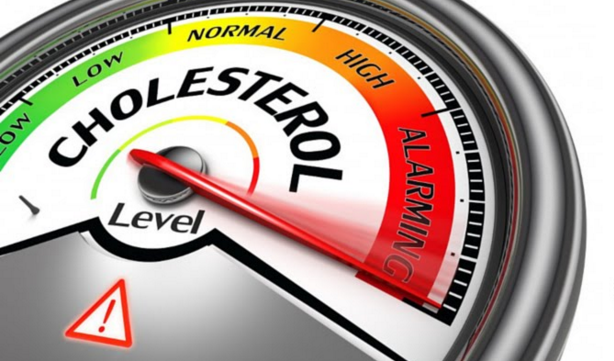
- Lightning strikes during thunderstorms are rare but dangerous, with the highest risk during the summer months.
- Lightning can cause injuries such as blunt trauma, paralysis, brain bleeds, burns, vision or hearing loss and cardiac or respiratory arrest.
- Seek shelter, avoid elevated areas, stay away from water and conductive objects, and crouch down if no shelter is available during a thunderstorm.
- After a thunderstorm, wait 30 minutes after you hear thunder before going out. Watch for fallen power lines and be aware of flash flooding.
- Call 911 if someone is struck by lightning, as they can be safely handled and may need CPR or AED.
Understanding the risk of lightning strikes
Lightning is a powerful and unpredictable force of nature. It occurs when electrical charges build up in storm clouds, creating a discharge that can travel at speeds of up to 200,000 miles per hour. The risk of lightning strikes is highest during the summer months when warm, moist air rises and collides with cooler air, creating the perfect conditions for thunderstorms. In the United States, Texas, Florida, Oklahoma and Kansas are the states with the highest density of lightning strikes per square mile. Lightning strikes can cause a range of injuries, from mild to fatal. The force of the strike can result in blunt trauma, throwing a person several feet or causing severe injuries upon impact. Other potential injuries include:- Temporary paralysis - Victims may experience temporary loss of muscle function.
- Brain bleeds and nerve damage - The electrical current can cause internal bleeding in the brain and severe nerve damage.
- Electrical burns - These can range from superficial skin burns to deep tissue damage caused by heated objects.
- Vision and hearing loss - Damage to the eyes and ears can lead to cataracts, hearing loss or balance problems.
- Cardiac and respiratory arrest - A direct strike can stop the heart and lungs instantly. Even if the heart restarts, immediate medical attention is crucial to restore breathing.
Tips for avoiding lightning strikes
When thunder roars, go indoors. This age-old advice is the best way to avoid being struck by lightning. However, if you find yourself outside during a thunderstorm, here are some crucial steps to follow:Seek shelter immediately
As soon as you hear thunder, head for a sturdy building or a fully enclosed vehicle with the windows up. Avoid open structures like porches, gazebos and baseball dugouts, as they offer little protection.Avoid elevated areas
If you’re on a hill, mountain ridge or any elevated area, move to lower ground immediately. Lightning is attracted to higher points. (Related: Prepping essentials: How your everyday clothes could save your life when disaster strikes.)Stay away from water
Bodies of water, including ponds, lakes and swimming pools, are dangerous during thunderstorms. Water conducts electricity, increasing the risk of a lightning strike.Steer clear of conductive objects
Stay away from metal fences, power lines and windmills. These objects can conduct electricity and pose a significant risk.Avoid isolated trees
Trees, especially tall and isolated ones, are frequent targets for lightning. If you’re in a forest, seek shelter in a low-lying area away from trees.Last resort outdoor tips
- If you’re caught in an open area with no shelter nearby, crouch down with your feet close together and your head tucked down. This position minimizes your contact with the ground and reduces the risk of being struck.
- If you’re unable to find a safe shelter, the key is to minimize your risk as much as possible. Avoid open fields, hilltops and tall objects.
- If you’re with a group, spread out to avoid multiple casualties.
Watch for fallen power lines
If you encounter a downed power line, stay at least 35 feet away and report it to the authorities immediately.Be aware of flash flooding
Thunderstorms can cause flash floods, so pay attention to weather alerts and avoid low-lying areas.Check on others
If someone has been struck by lightning, call 911 immediately. Lightning victims do not carry an electrical charge and can be safely handled. Administer first aid and, if necessary, perform CPR or use an automated external defibrillator (AED) if one is available. Being prepared can significantly reduce your risk of being struck by lightning. Before heading outdoors, always check the weather forecast. If thunderstorms are predicted, consider postponing your activities or ensuring there is a safe shelter nearby. Having a lightning safety plan in place can save lives. While lightning strikes are rare, they are a serious threat that should not be underestimated. By understanding the risks and taking appropriate precautions, you can protect yourself and those around you during thunderstorms. Visit Survival.news for more useful survival tips. You can also check out Health Ranger Store and Brighteon Store for more clean food supplies for your prepping needs. Watch this clip about UHMWPE Braided Survival Cord and Bug Spray, two essential prepping tools for your survival kit. This video is from the Health Ranger Store channel on Brighteon.com.More related stories:
Emergency flashlight: Compact light to help you navigate life’s unexpected moments. Tsunami preparedness: Tips on how to survive monster waves. The surprising benefits of worrying the right way (and how to do it). Sources include: EverydayHealth.com Weather.gov Ready.gov Brighteon.comUrgent Wake-Up Call: The Coming AI Robot Wars and the Great Human Unity
By Mike Adams // Share
Ancient herbal wisdom for modern wound care: A simple guide for preppers
By Evangelyn Rodriguez // Share
Warning signs of high cholesterol and how to manage it without medication
By Zoey Sky // Share
Baking soda: Health benefits and practical uses
By Evangelyn Rodriguez // Share
NASA tracks house-sized asteroid amid growing celestial threats
By Ava Grace // Share
Dr. Joseph Pizzorno’s “Total Wellness” offers a new path to optimal health
By Kevin Hughes // Share
An invisible assault: How everyday heavy metals sabotage brain health
By willowt // Share
Pentagon warns of China's rapidly expanding nuclear arsenal
By kevinhughes // Share
FCC grounds new Chinese drones in sweeping security move
By avagrace // Share
The methylation switch: Scientists identify diet that can turn back the cellular clock
By jacobthomas // Share
Renaissance or Ruin: A wake-up call for cultural revival and self-sufficiency
By kevinhughes // Share
Weight loss in midlife may trigger brain inflammation, study finds
By avagrace // Share











